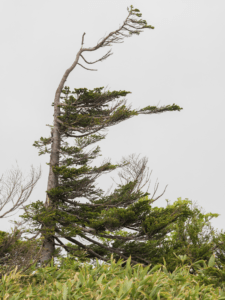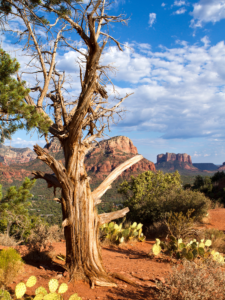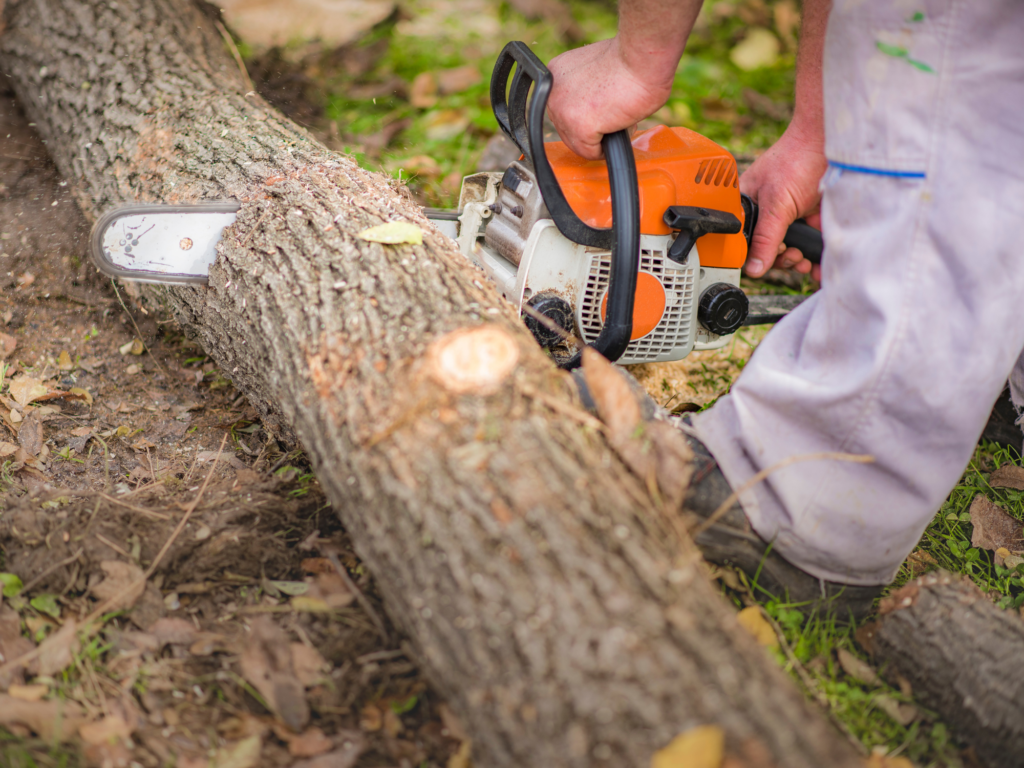An unhealthy tree might not appear to be a hazard. Once an arborist determines that a tree is in failing health or no longer living, you might have to cut it down, even if the trunk isn’t leaning or there are no hanging branches.
It’s important to note that the signs on this list aren’t guarantees that a tree must come down; if you notice one or more of them on a tree on your property, call an arborist for a professional opinion!
Signs Of Stress
 Dying trees show many signs that they are in bad shape, and sometimes, the professional diagnosis is cutting the tree down. When you notice shrivelled or discoloured leaves or see that the tree is suddenly dropping them during the summer or spring, it’s likely to be very sick. Weak branches with rot at their base can fall without the help of strong winds or inclement weather, posing a threat to property and well-being even on a sunny day.
Dying trees show many signs that they are in bad shape, and sometimes, the professional diagnosis is cutting the tree down. When you notice shrivelled or discoloured leaves or see that the tree is suddenly dropping them during the summer or spring, it’s likely to be very sick. Weak branches with rot at their base can fall without the help of strong winds or inclement weather, posing a threat to property and well-being even on a sunny day.
This rot can extend to the trunk, which is a good sign that a bacteria or fungus has found a home in the tree’s tissues. You’ll often notice this due to peeling bark, and if the tree isn’t a species that would shed its bark, the peeling may be a sign of disease or sickness.
If you see any of these signs, you can do a “scratch test” to see if the tree is in good health. Use your fingertip or a knife to scratch a branch or twig; if the tissue is green and moist below the bark, your tree is still alive. Repeat the test on several parts of the tree to see if the problem is only on a few branches, or if the whole tree is dead.
The Roots Are Showing At The Surface
A sign of trouble is when the tree’s roots grow at the soil’s surface rather than down into the ground. A shallow root system will make it more susceptible to harm from weather, animals and humans, which could then lead to the whole tree coming down.
Any damage to this part of the tree could be the root cause of many issues, including thinning foliage, dying or dead canopies and branches, undersized, wilted, or brown leaves, and poor annual growth.
Fungal Growth Near The Base Of The Tree
A sign of fungal growth is discoloured or depressed parts of the tree called cankers. Seeing mushrooms growing on the ground at the base (or on the tree itself) is the easiest way for nonprofessionals to identify a problem.
Don’t rush a diagnosis, though! Many growths are natural, including moss and lichen (a type of moss combined with fungi); they indicate that a tree is growing slowly but not that it is dying.
Populations Of Pests
 Trees are habitats for many insects, birds, amphibians, and rodents. Most animals who make a home in your tree are harmless, but some are attracted to it because their dead, weakened, or dying host makes for a delicious meal. Others can take a healthy tree and kill it; for example, the invasive Emerald Ash Borer beetle could do a lot of damage to your tree. If not caught in time, you will have to cut down a borer-infected tree to protect other ash trees in the area.
Trees are habitats for many insects, birds, amphibians, and rodents. Most animals who make a home in your tree are harmless, but some are attracted to it because their dead, weakened, or dying host makes for a delicious meal. Others can take a healthy tree and kill it; for example, the invasive Emerald Ash Borer beetle could do a lot of damage to your tree. If not caught in time, you will have to cut down a borer-infected tree to protect other ash trees in the area.
No matter what the issue is, diagnosing a tree is a two-person task. You and the arborist both play a role in keeping your yard safe from a hazardous tree. A dying tree is not a dead one – there’s always a chance we can bring it back to health!

